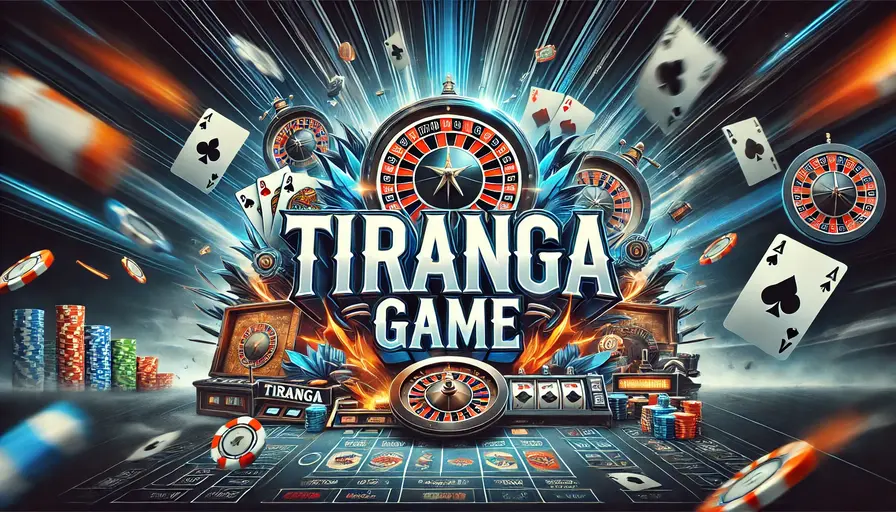The Tiranga Game is an innovative and exciting way to celebrate India’s national flag while fostering a deeper understanding of the country’s values, history, and culture. This engaging game brings people together in a fun, educational environment, where participants not only enjoy friendly competition but also learn about the significance of India’s flag—the Tiranga. Whether it’s for a school event, community gathering, or national celebration, the Tiranga Game serves as an interactive tool to promote unity, patriotism, and pride in India's heritage.

The Symbolism of the Tiranga
Before diving into the game, it is crucial to understand the meaning behind India’s national flag, the Tiranga. The flag consists of three horizontal stripes—saffron at the top, white in the middle, and green at the bottom—along with the Ashoka Chakra in the center. Each of these elements carries deep symbolism:
Saffron: Represents courage, sacrifice, and the spirit of freedom.
White: Symbolizes truth, peace, and harmony.
Green: Reflects faith, fertility, and the country’s agricultural prosperity.
Ashoka Chakra: The navy blue wheel with 24 spokes represents the eternal wheel of law and progress, embodying the idea of continuous movement toward justice and righteousness.
These colors and symbols encapsulate the essence of India’s identity, and the Tiranga Game provides an opportunity to explore and celebrate these values in a lively and engaging way.
How the Tiranga Game Works
The beauty of the Tiranga Game lies in its adaptability. It can be modified to suit different age groups, event types, and settings, making it an ideal activity for schools, public events, or national celebrations like Independence Day and Republic Day. Participants are typically divided into three teams, each representing one of the three colors of the Tiranga—saffron, white, or green. The teams then compete in a series of challenges, quizzes, and tasks that test their knowledge of India’s history, the significance of the flag, and their teamwork skills.
Popular Versions of the Tiranga Game
Flag Trivia Quiz: A fun and educational version of the game, where teams answer a series of questions related to the Indian flag, its history, and its symbolism. Questions may include topics such as, “What does the Ashoka Chakra represent?” or “Who was the designer of the Indian flag?” The team that answers the most questions correctly wins. This version encourages participants to learn about India's heritage and the values symbolized by the flag.
Creative Flag Construction: This version of the Tiranga Game challenges teams to create a large, accurate replica of the Tiranga using colored paper, cloth, or markers. Teams must ensure the colors are in the correct order and that the Ashoka Chakra is placed in the center. This hands-on activity not only reinforces the participants' knowledge of the flag but also allows them to express their creativity while learning about the significance of each color and symbol.
Patriotic Relay Race: A physically active variation of the Tiranga Game, where teams compete in a relay race involving tasks related to the flag and India’s history. Participants might answer questions about the country’s freedom struggle or perform symbolic actions like raising a flag or chanting patriotic slogans. This version combines fun, physical activity, and education, helping participants connect with the spirit of India’s unity and diversity.
Educational and Social Impact
The Tiranga Game offers much more than entertainment. It serves as an educational tool that encourages participants to learn about the history of India’s independence, the significance of its national flag, and the values it represents. By taking part in this game, individuals deepen their understanding of the flag’s symbolism and India’s cultural heritage. Moreover, the game promotes social interaction, cooperation, and teamwork, allowing participants to bond over shared knowledge and a common appreciation for their country’s identity.
Conclusion
In conclusion, the Tiranga Game is a fun and meaningful way to celebrate India’s national flag, its symbolism, and the values it represents. Whether it’s played in schools, community gatherings, or during national holidays, the game fosters patriotism, unity, and a deeper connection with India’s heritage. Through creativity, competition, and collaboration, the Tiranga Game provides a memorable experience that celebrates India’s pride and spirit of independence. It is an excellent way to engage people of all ages and bring them together in celebration of India’s national identity.